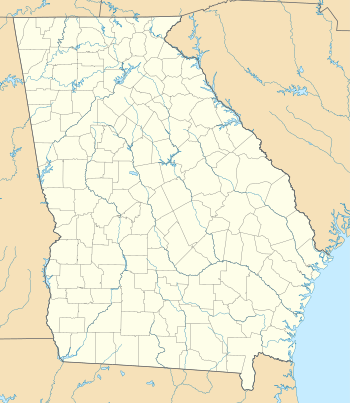Blackbeard Island National Wildlife Refuge
| Blackbeard Island National Wildlife Refuge | |
|---|---|
|
IUCN category IV (habitat/species management area) | |
 | |
| Location | McIntosh County, Georgia |
| Nearest city | Savannah, Georgia |
| Coordinates | 31°29′27.51″N 81°12′43.80″W / 31.4909750°N 81.2121667°WCoordinates: 31°29′27.51″N 81°12′43.80″W / 31.4909750°N 81.2121667°W |
| Area | 5,618 acres (118 km²) |
| Established | 1924 |
| Visitors | 130,000 (in 2004) |
| Governing body | U. S. Fish and Wildlife Service |
| Website | Blackbeard Island National Wildlife Refuge |
The Blackbeard Island National Wildlife Refuge is a 5,618 acre (118 km²) National Wildlife Refuge located in McIntosh county in Georgia. The refuge was established to provide a nature and forest preserve for esthetic and conservation purposes.
The refuge is one of seven refuges administered by the Savannah Coastal Refuges Complex in Savannah, Georgia. The complex has a combined staff of 31 with a fiscal year 2005 budget of $3,582,000.
History
.jpg)
The name of the island comes from Edward Teach, the infamous pirate Blackbeard. There is a legend that part of his treasure is buried on the island. There has never been a single doubloon found though. The last hunt took place in the 1880s on the north end of the island. There have been no further authorized attempts since.[1]
The land which is currently Blackbeard Island originally came from the Navy Department in 1800 in a public auction as a source of live oak timber for ship building. The island was then placed under the jurisdiction of the Bureau of Biological Survey to be maintained as a preserve and breeding ground for native wildlife and migratory birds in 1924. A presidential proclamation in 1940 changed its designation from Blackbeard Island Reservation to Blackbeard Island National Wildlife Refuge.
Topography
Blackbeard island is accessible only by boat. Transportation to the island is not provided by the Fish and Wildlife Service. A public boat ramp on Harris Neck NWR (Barbour River Landing) may also be used as a launching site for trips to the island.[2]
The island consists of interconnecting linear dunes thickly covered by oak/palmetto vegetation. There are approximately 1,163 acres (4.71 km2) of open freshwater or freshwater marsh, 2,000 acres (8.1 km2) of regularly flooded salt marsh, 2,115 acres (8.56 km2) of maritime forest, and 340 acres (1.4 km2) of sandy beach.[3]
Wildlife and protected species
The main objective of the refuge is to provide wintering habitat and protection for migratory birds. It is also to provide protection and management for endangered and threatened species such as the loggerhead sea turtle, American bald eagle, wood stork, and piping plover. Notable concentrations of waterfowl, wading birds, shorebirds, songbirds, raptors, deer, and alligators can be seen at various times of the year.
Facilities
There is no visitor center at the refuge.
See also
References
- ↑ "History of Blackbeard Island - Blackbeard Island - U.S. Fish and Wildlife Service". www.fws.gov. Retrieved 2016-05-26.
- ↑ Park Information - Blackbeard Island National Wildlife Refuge Archived June 19, 2008, at the Wayback Machine.
- ↑ Blackbeard Island National Wildlife Refuge, a Georgia State Park